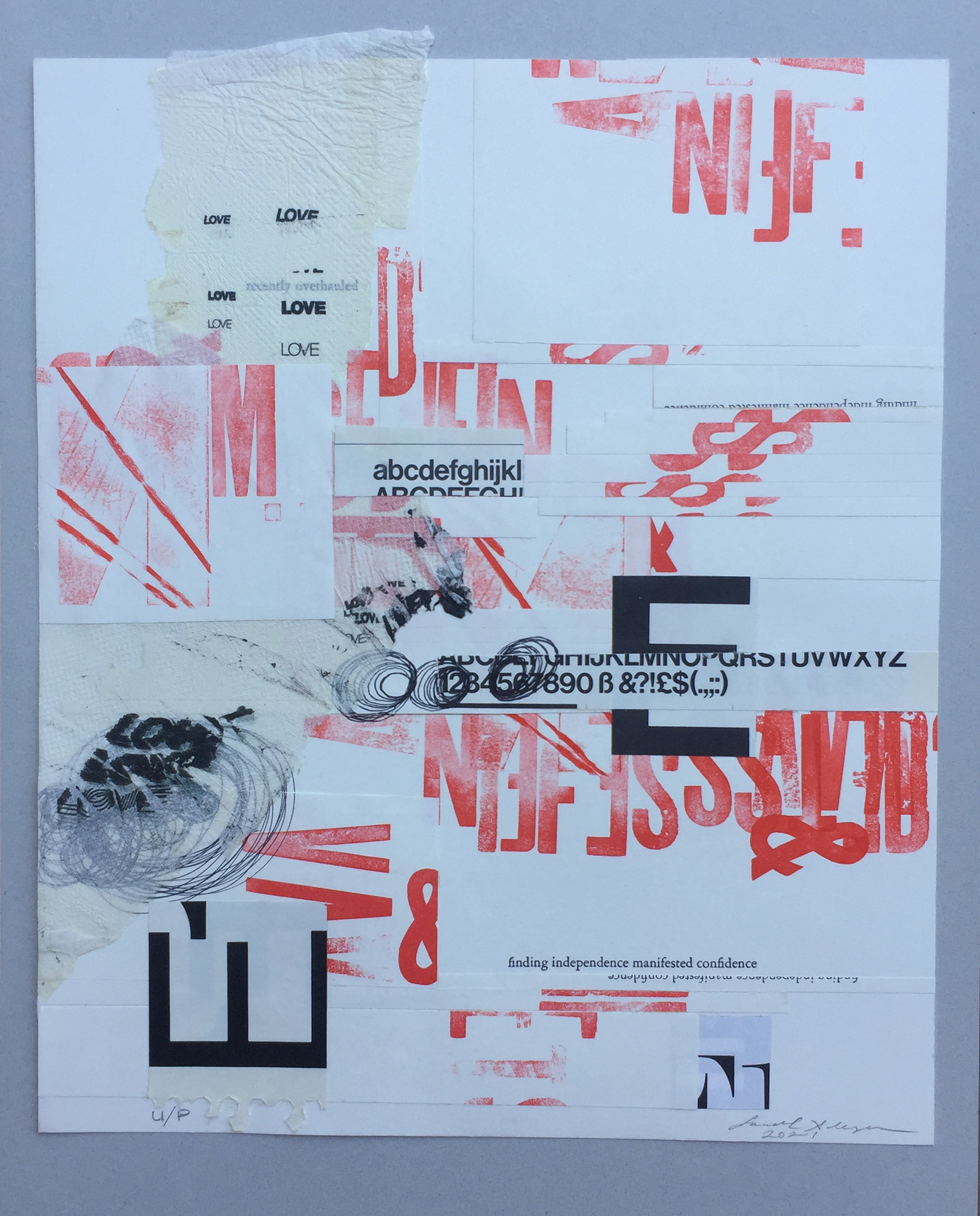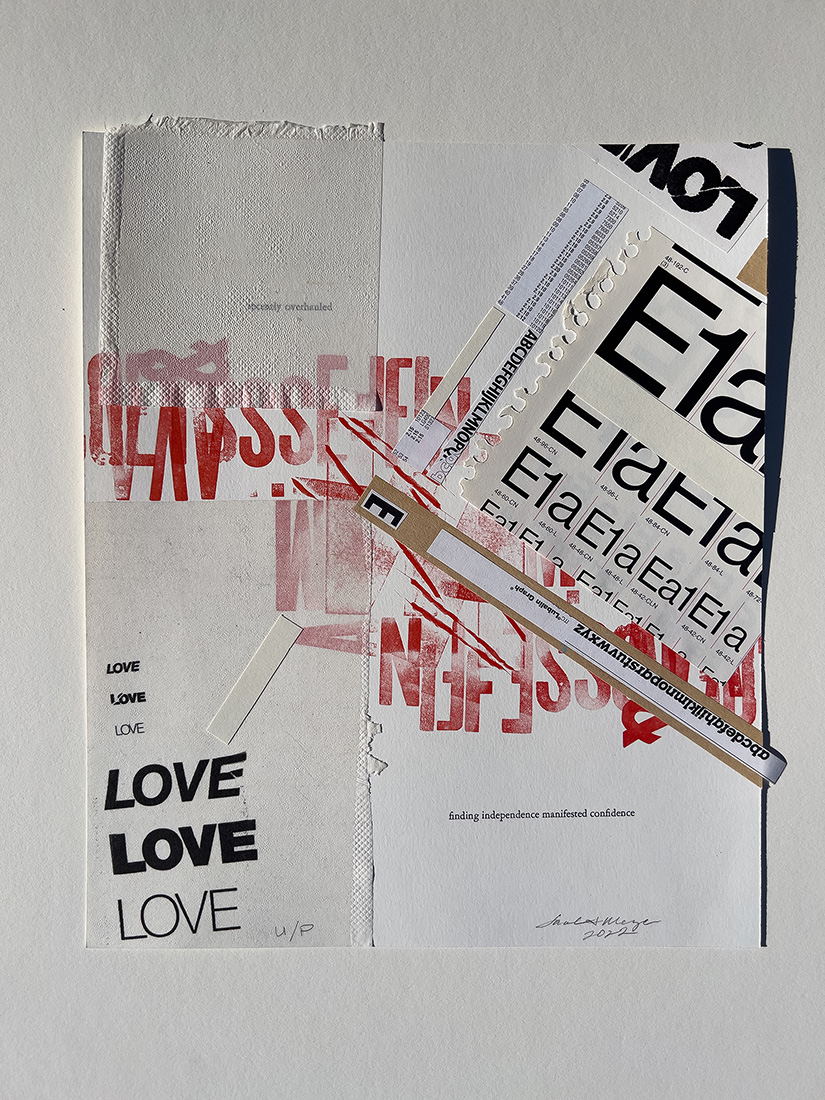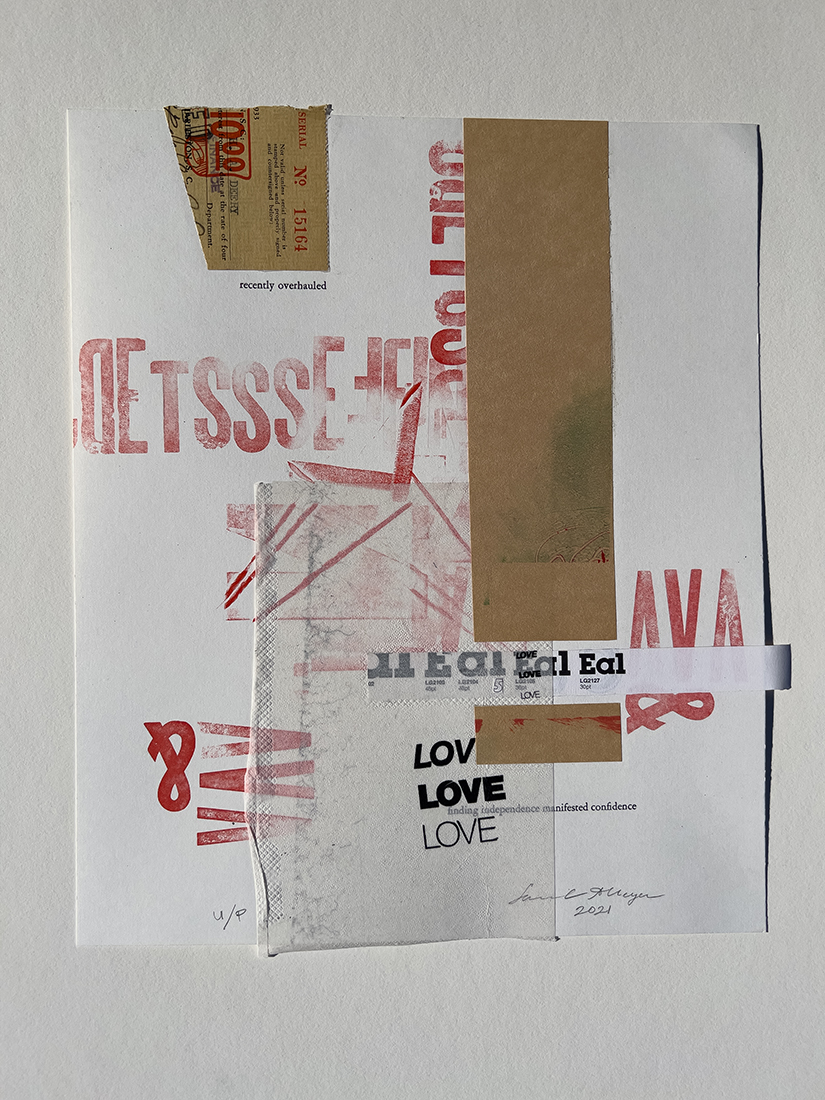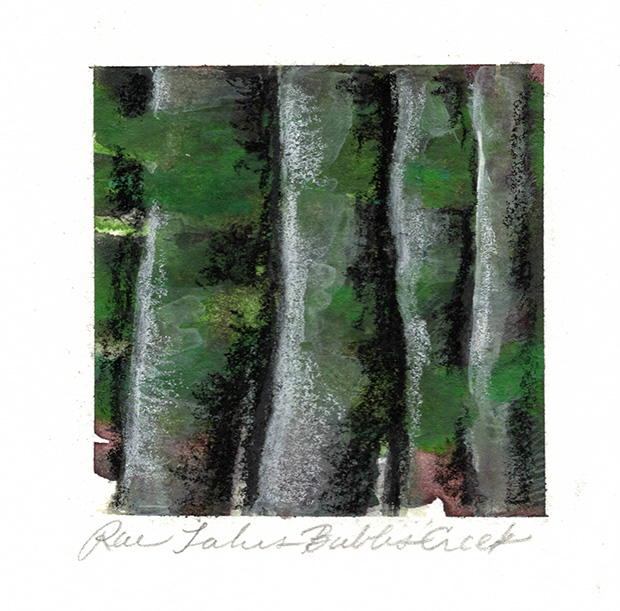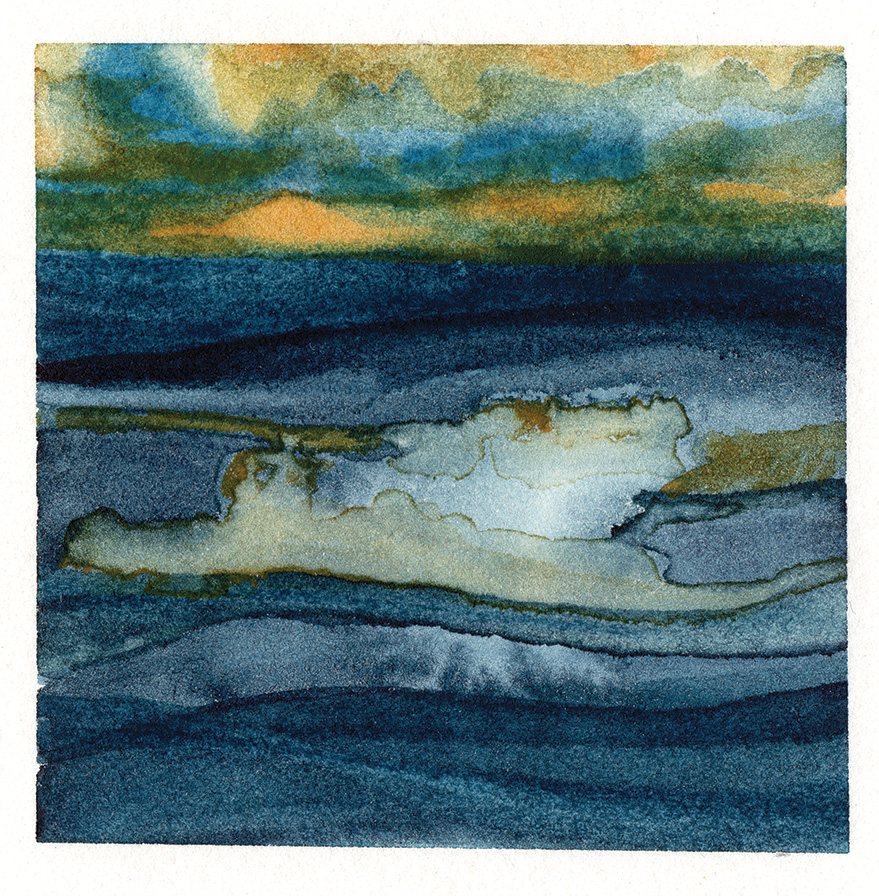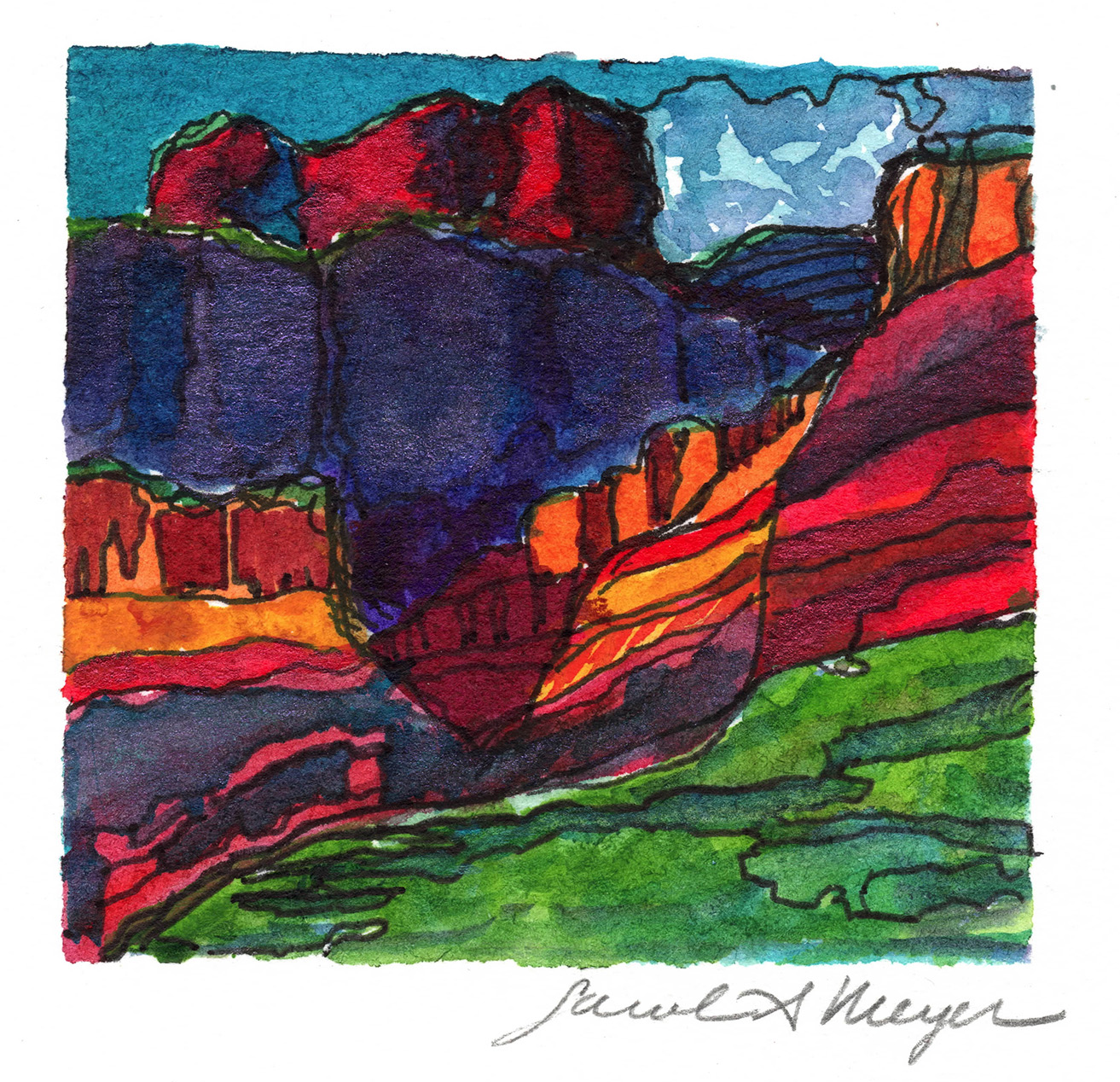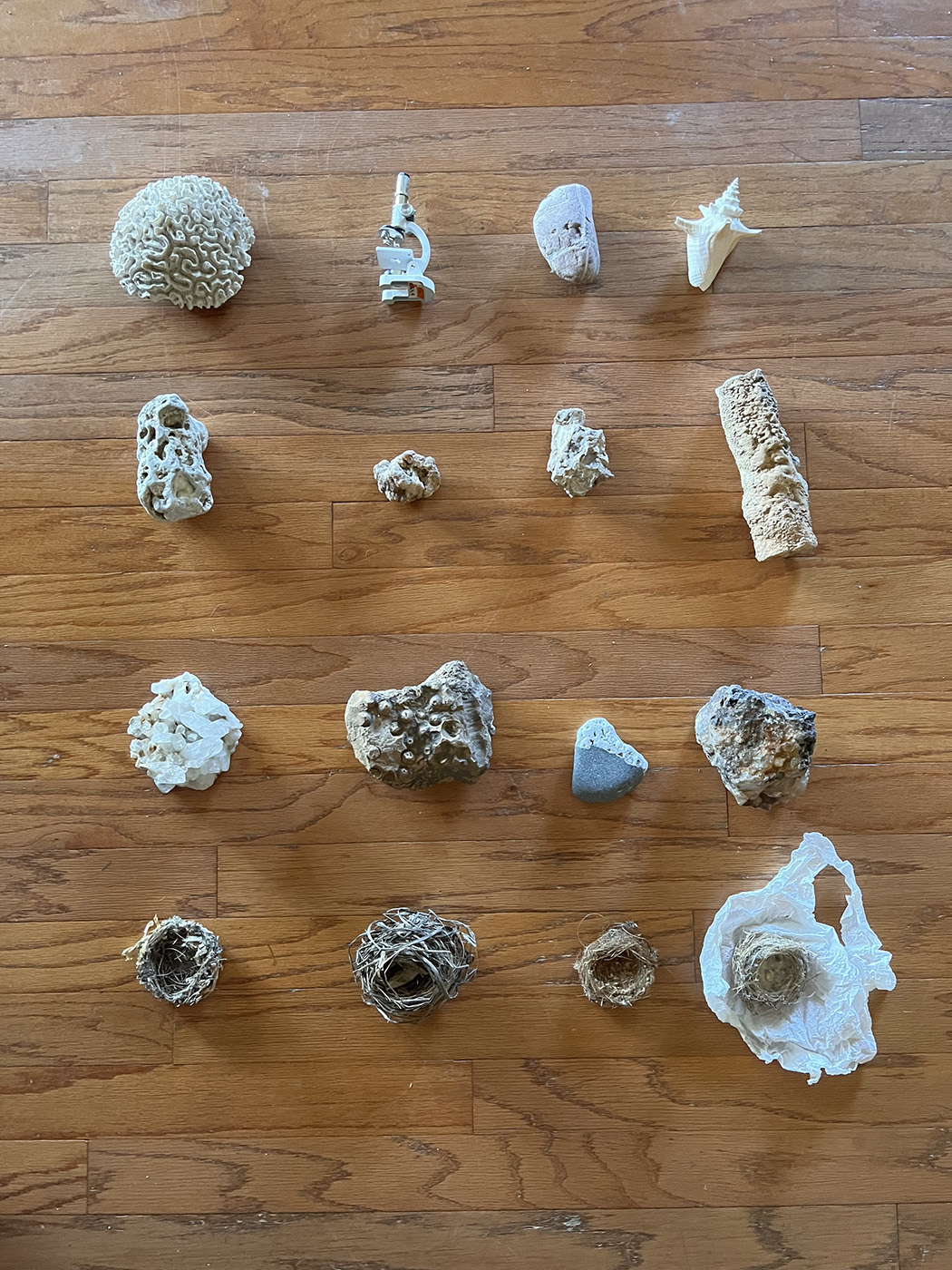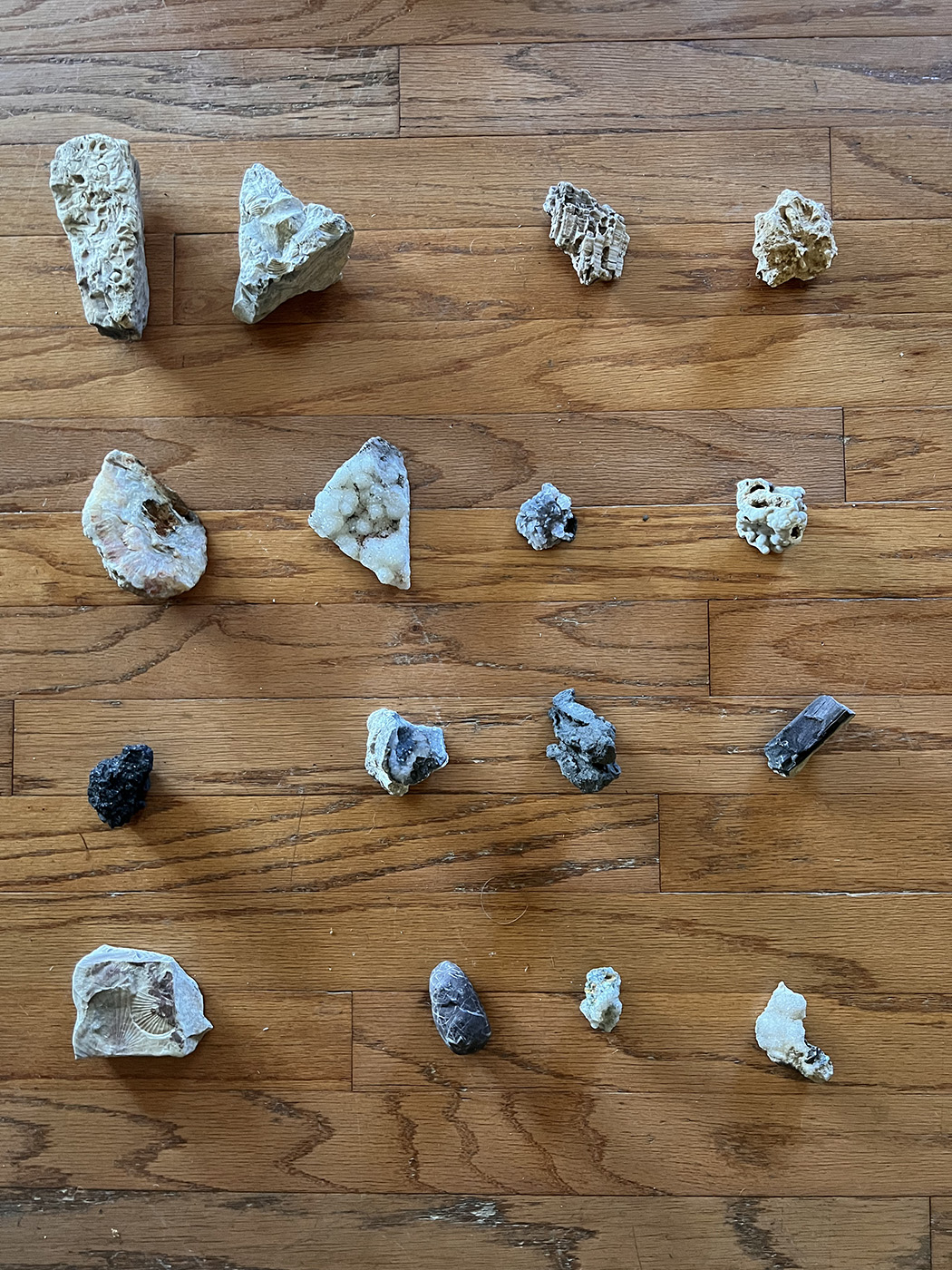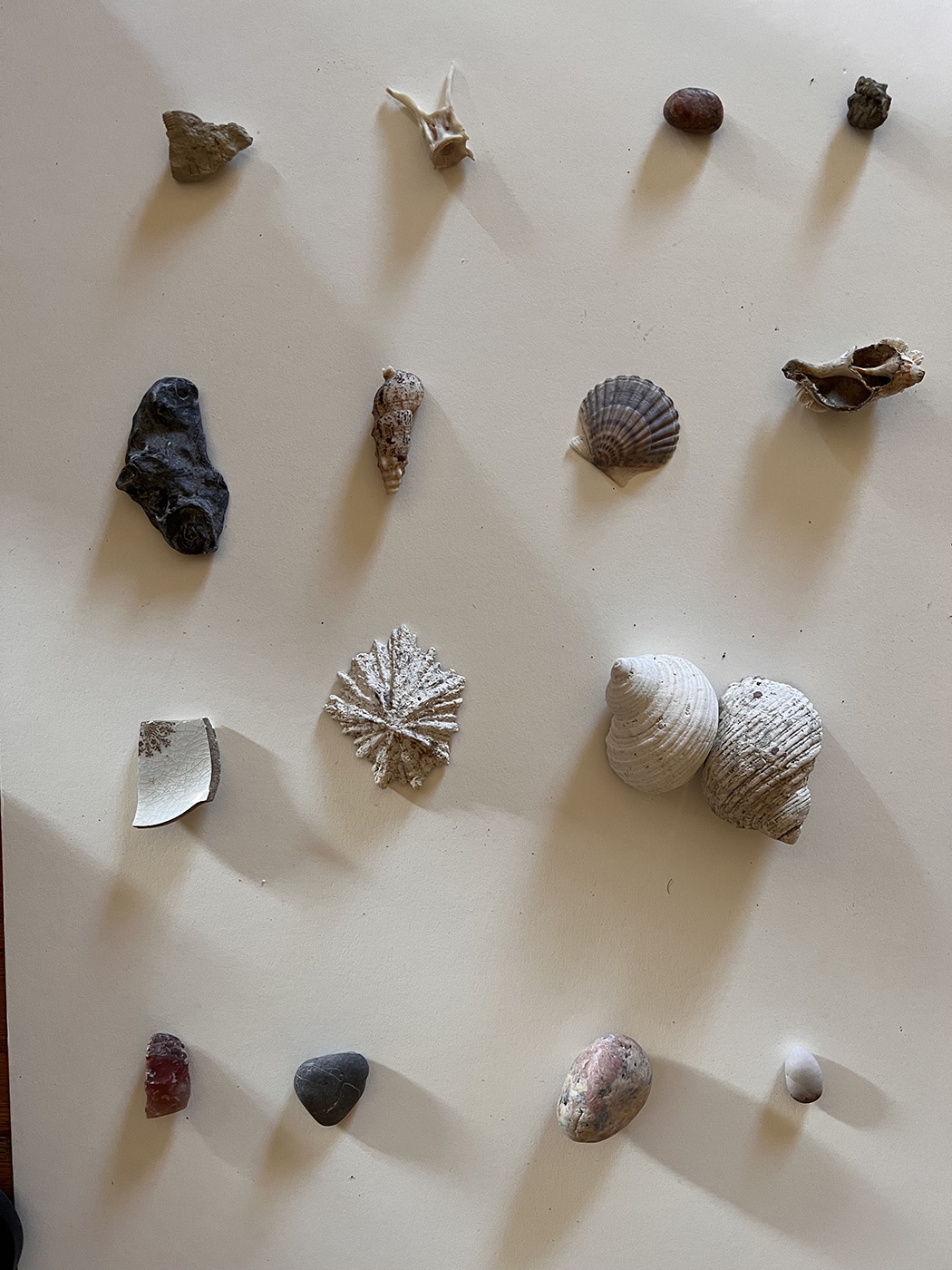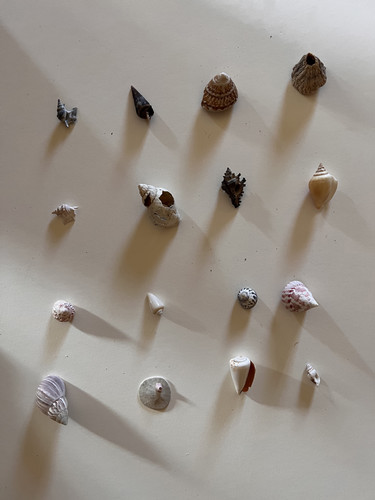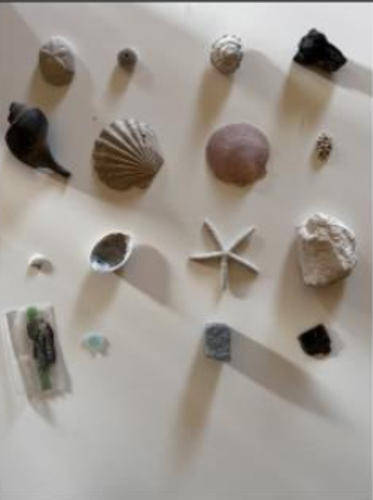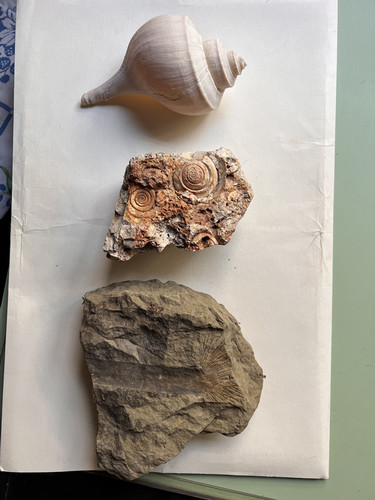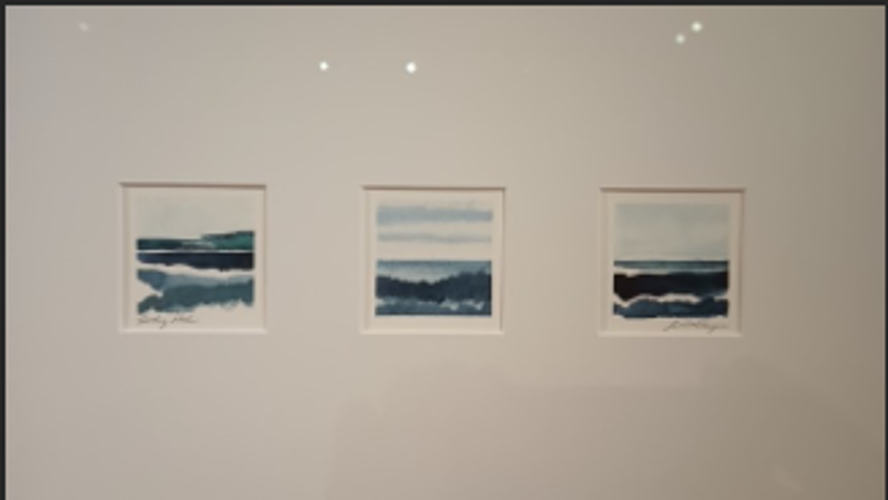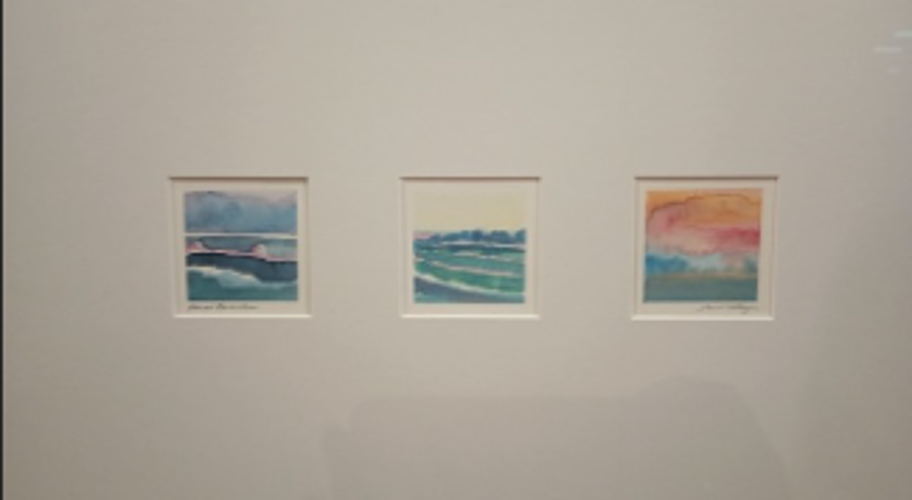What You Carry:
A Sabbatical Exhibition by Sarah Meyer
Mar 20, 2023 to Jun 1, 2023
Location: Huntley GalleryPress the tab key to view the content. Use the down arrow key to move to the next tab and up arrow key to move to the previous.

For several years, Los Angeles-based artist Sarah A. Meyer has been hiking and backpacking to seemingly forgotten places and observing the cultural stewardship of open spaces. During her professional sabbatical leave, she intensified her exploration to include routes traversed by ancient peoples since the Paleolithic period. Using only what she can carry, Meyer provides an intimate window into the wild places that connect people to the natural world. Using diffused colors and the written form, the culmination is an interdisciplinary body of work that chronicles the plein air experience, and poetically maps Meyer’s internal transformation as a designer.
Hike your own hike…it will change you.
– Sarah A Meyer
About Sarah A. Meyer
 Born in the Midwest, in the city of St. Louis, Sarah A. Meyer is inspired by the empty spaces and the stories told by the folk in often overlooked places. Inspired by her mother who dropped her off on the north side of the Grand Canyon when she was 15 and picked her up three days later on the south side, she believes in serious Type II Fun1 and that everyone has a story to tell. We just have to do the hardwork to get there and be still enough to listen. Her studio practice is based on quiet observation, writing, and documentation. Her medium varies from painting and photography, to book design and printing.
Born in the Midwest, in the city of St. Louis, Sarah A. Meyer is inspired by the empty spaces and the stories told by the folk in often overlooked places. Inspired by her mother who dropped her off on the north side of the Grand Canyon when she was 15 and picked her up three days later on the south side, she believes in serious Type II Fun1 and that everyone has a story to tell. We just have to do the hardwork to get there and be still enough to listen. Her studio practice is based on quiet observation, writing, and documentation. Her medium varies from painting and photography, to book design and printing.
Sarah A. Meyer is a designer, artist, author, and educator. She is a Professor of Visual Communication Design at Cal Poly Pomona’s Department of Art. She has a MFA in Visual Communications & Graphic Design from Virginia Commonwealth University, and a BS in Graphic Arts, Technology, & Management from from the University of Central Missouri.
“I started backpacking as a young girl when it was the cheapest way to get out of the city with equipment left over from my grandfather and father’s years in the service. A light pack often weighed over 50 pounds (23 kg) without water. Two knee injuries later, I have reduced the pack weight to under 30 pounds (14 kg), so that I might continue to observe, document, and reflect upon experiences in the outdoors. Each backpacking trip is a way to engage with the natural world, learn about the geography, and listen to elders. Walking into natural spaces is a history lesson and quiet activism, one step at a time. My work is strongly directed by the stories we tell ourselves and others in these outdoor spaces and how they impact our internal sense of place.”
She currently serves as professor and a program coordinator of Visual Communication Design in California Poly Pomona's Department of Art and is a member of the board for the National Council of Art Administrators and an ambassador for the Innovation Center for Design Excellence.
An ancient metaphor: thought is a thread, and the raconteur is a spinner of yarns –but the true storyteller, the poet, is a weaver. The scribes made this old and audible abstraction into a new and visible fact. After long practice, their work took on such an even, flexible texture that they called the written page a textus, which means cloth.
– Robert Bringhurst
Cal Poly Pomona's Land Acknowledgement
We acknowledge that Cal Poly Pomona resides on the traditional territory and homelands of the California Indians. The GabrielenoTongva and Tataavium people are the traditional land caretakers of Tovaangar. We also acknowledge that this land remains the shared space among the Kizh, Serrano, Cahuilla, Rumsen/Ohlone, and Luiseno people. We acknowledge the spiritual connection and rights as the original stewards and traditional caretakers of this land. We thank them for their strength, perseverance and resistance. Through allyship Cal Poly Pomona will build relationships based on TRUST, CONSISTENCY, and ACCOUNTABILITY with Native/American Indian peoples and tribal nations as we are guest or settlers on these lands.
 Tuesday, March 21, 2023, 5-7 pm
Tuesday, March 21, 2023, 5-7 pm
What you Carry: Internal Spaces, Forgotten Places | Opening Reception
Join us on Mach 21st, 5-7 pm for our opening reception at the Huntley Art Gallery! Register on Eventbrite here or scan the QR code.
 Saturday, April 29, 2023, 3-5 pm
Saturday, April 29, 2023, 3-5 pm
What you Carry: Internal Spaces, Forgotten Places | Industry Day Crossover Event
Join us on April 29, 3-5 pm for our crossover event at the Huntley Art Gallery! Register on Eventbrite here or scan the QR code.
Forgotten Places
Watercolor has, historically, been used as a documentary medium within the plein air school of painting. Starting in the 1800s, watercolor provided a light-weight alternative that could be easily carried to remote places. In comparison to oils, the solvent (water) was trouble-free and readily available on long journeys. Although idealized, the results from that time provided insight into the often overwhelming and epic landscape that few could access. Epic landscapes are now well-documented through photography and throughout social media geotags. Hard-to-access places are easier to find, but may be more difficult to see, due to the pace of society.
This body of work seeks to slow down the experience and give insight and a sense of place. But it will never render a complete picture. Like the work of the plein air painters of the 1800s, the artwork is executed with only what can be carried. In this case, all materials are carried by the artist in a backpack, and the image is constrained to a 2.25 by 2.25 inch “window” that provides a small vignette of color and space. A moment-by-moment experience emerges when paired with other paintings in the triptych. However, the entirety of the experience could never be captured. Only an understanding of the aesthetic qualities and fleetingly poetic internal and external spaces are recorded in this body of work.
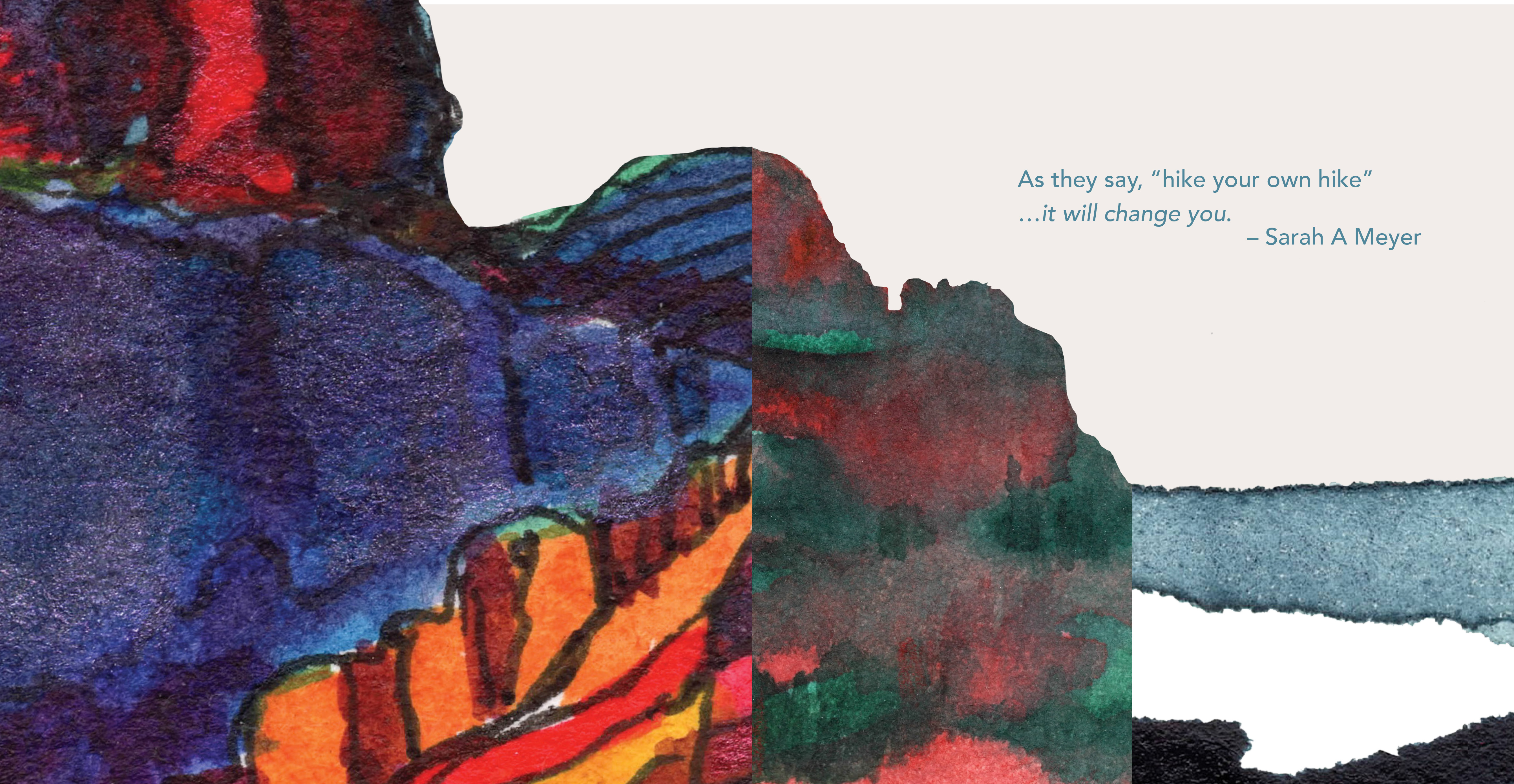
Internal Spaces
Typography, the art of type, takes into consideration the style, arrangement, and appearance of typographic matter. Typography enhances our everyday lives, giving us information that is both implicit and explicit. In a cityscape, typography is an enigmatic thing, both old and new simultaneously. Taken out of context, typography can become more confusing or more informative. Simplifying the noise of the environment in which the type is placed can enhance or detract from its original intent. It is this juxtaposition of intent and usage that influences my work.
In this body of work, typographic specimen books are used to constrain the writing. Constrained writing is a literary technique in which the author sets new parameters and rules to follow. For example, changing the order of words creates new meaning; and as contradictory as it may seem, two things go together always to create a new story. The English pangram, “The quick brown fox jumps over the lazy brown dog,” has become a commonplace method to display every letter of the English alphabet in typographic specification books since 1980. However, older typographic specification books often went beyond this pangram to provide insights into daily living. Therefore, only the words and phrases included on one font specification sheet from the 1923 edition of the American Type Founders Specimen Book and Catalog were used to create poetry reflecting hard-won, internal liberations. The collage letterforms were curated from the 1986 Letraset Graphic Arts Materials Reference Manual.
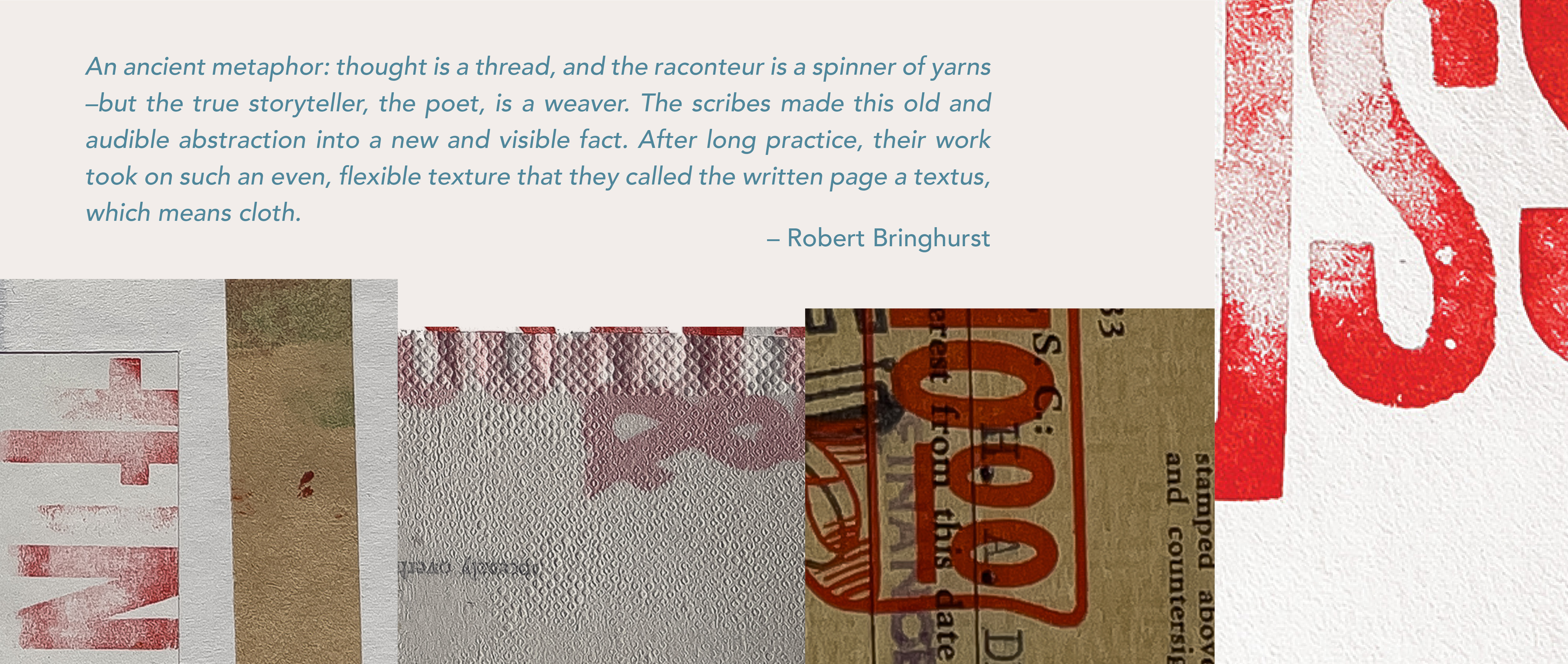
Artist's Biography
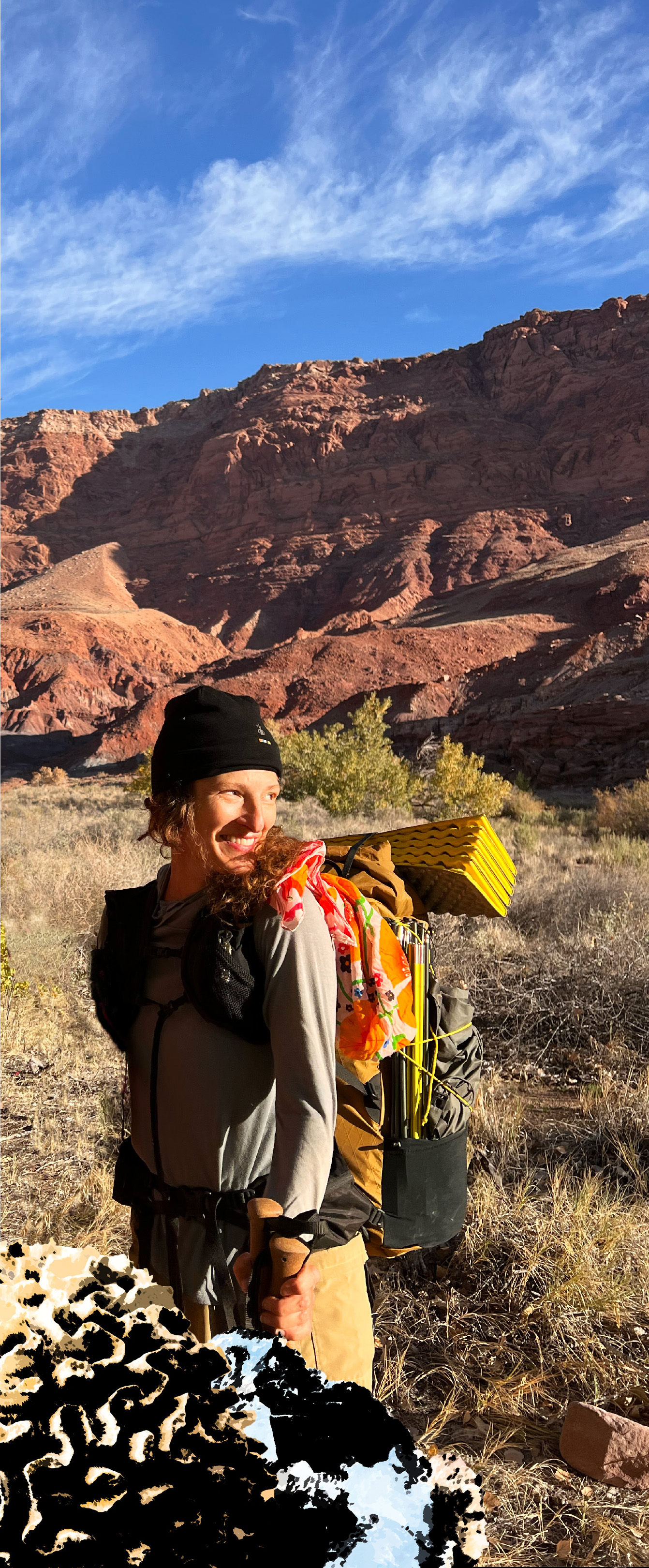 Sarah A. Meyer is a designer, artist, author, and educator. She has an active exhibition record, with noteworthy purchase awards for her work in typography, book arts, and watercolor, and her work is included in permanent collections such as the Walker Gallery, University of Nebraska. Her design work has been exhibited in numerous publications, including Working with Computer Type 3: Color (Switzerland/UK: RotoVision, 1997) and United Designs (Korea: Hanyang University, 2004, 2009), and received awards of excellence from such associations as The Society of Technical Communications and The
Sarah A. Meyer is a designer, artist, author, and educator. She has an active exhibition record, with noteworthy purchase awards for her work in typography, book arts, and watercolor, and her work is included in permanent collections such as the Walker Gallery, University of Nebraska. Her design work has been exhibited in numerous publications, including Working with Computer Type 3: Color (Switzerland/UK: RotoVision, 1997) and United Designs (Korea: Hanyang University, 2004, 2009), and received awards of excellence from such associations as The Society of Technical Communications and The
Art Directors Club. Her research in the field of typographic legibility has supported a patent with the United States Patent Office that is fully compliant with the Americans with Disabilities Act to support the needs of dyslexics and the disabled.
Her design writing has been published in the Design Management Journal, The Process of Management within a Creative Environment (Boston: The Design Management Institute, Design Management Institute Press, 2000) and Revival of the Fittest by Roy McKelvey and Phil Meggs (New York: ATC Publishers, 2000). She is an author of the bestselling book series Color Management: A Comprehensive Guide for Graphic Designers; Color Management for Logos: A Comprehensive Guide for Graphic Designers; Color Management for Packaging: A Comprehensive Guide for Graphic Designers; and Choosing Color for Logos & Packaging: Solutions for 2D & 3D Design (Switzerland/UK: RotoVision, 2005-2009; New York: Allworth Press, 2012).
Meyer has a record of leadership at comprehensive universities with experience in curriculum, financial and strategic planning, assessment and accreditation, governance, and building academic vision with faculty in support of diverse environments. She serves as a visiting evaluator for the accrediting body of the National Association of Schools of Art and Design and as a program lead for a CPP Science, Technology, Engineering, Arts, and Mathematics (STEAM) Academy whose mission is to connect high school students across the community and collaborate with industrial partners to expand innovation through team-based, hands-on projects, and online courseware. She has been invited to speak on innovation, design, and academia by organizations such as the International Council of Design (ICoD), the AIGA, and the College Art Association. She was awarded the United Designs Alliance (UDA) Medallion for her “dedication to education that is committed to adopting, collaborating, creating, impacting, and influencing creativity, intellectual inquiry, and cultural engagement through shared creativity without prejudice against color, convention, culture, economy, education, history, nationality, race, religion, sex, skill set, or social status.”
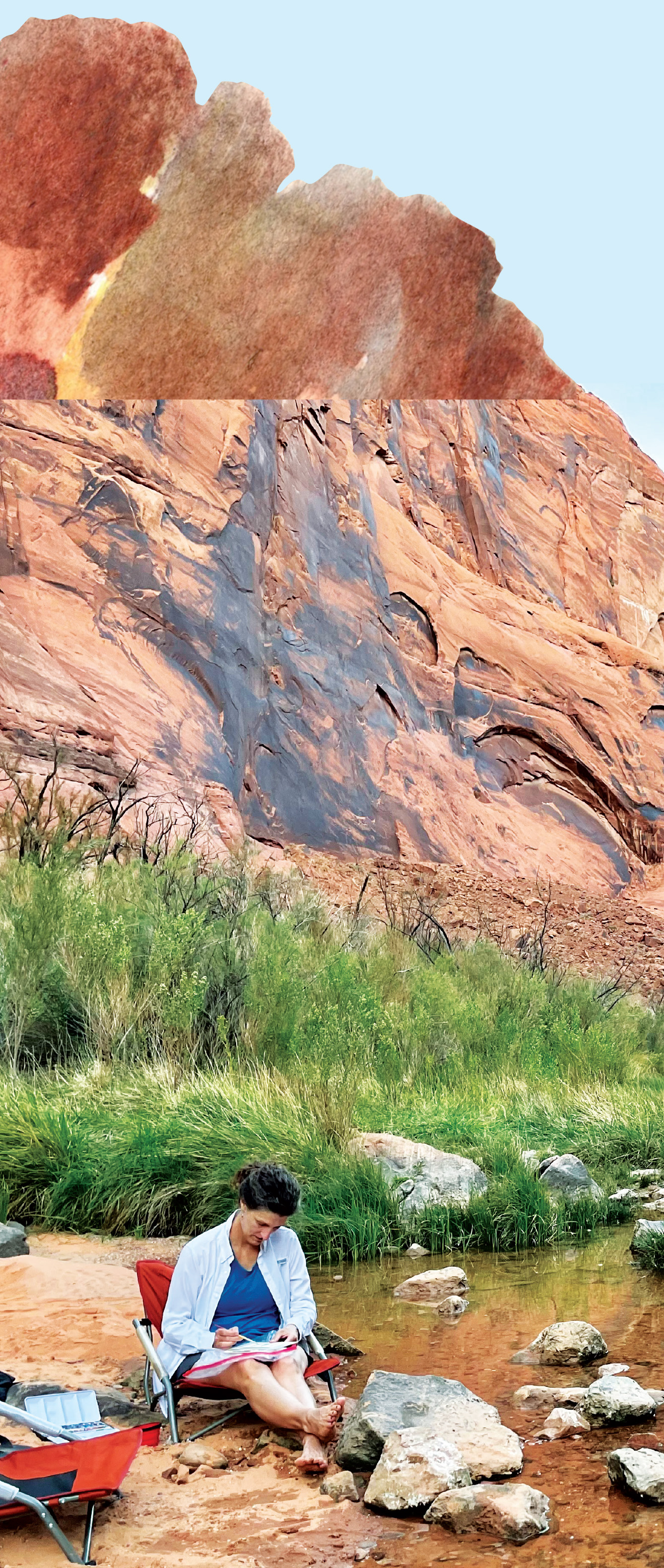 She currently serves as professor and a program coordinator of Visual Communication Design at Cal Poly Pomona and is a member of the board for the National Council of Art Administrators and an ambassador for the Innovation Center for Design Excellence. She has acted as chair of the Department of Art and interim associate dean of the College of Environmental Design comprised of Architecture, Art, Art History, Visual Communication Design, Landscape Architecture, Regenerative Studies, and Urban & Regional Planning at Cal Poly Pomona. She has previously held faculty positions at Virginia Commonwealth University in Richmond, The University of Utah, and California State University Fullerton, and she has been a visiting professor of visual communications and motion graphics at Virginia Commonwealth University in Qatar. She earned an MFA in Visual Communications and Graphic Design from Virginia Commonwealth University (VCU School of the Arts) and a BS in Graphic Arts Technology Management from the University of Central Missouri.
She currently serves as professor and a program coordinator of Visual Communication Design at Cal Poly Pomona and is a member of the board for the National Council of Art Administrators and an ambassador for the Innovation Center for Design Excellence. She has acted as chair of the Department of Art and interim associate dean of the College of Environmental Design comprised of Architecture, Art, Art History, Visual Communication Design, Landscape Architecture, Regenerative Studies, and Urban & Regional Planning at Cal Poly Pomona. She has previously held faculty positions at Virginia Commonwealth University in Richmond, The University of Utah, and California State University Fullerton, and she has been a visiting professor of visual communications and motion graphics at Virginia Commonwealth University in Qatar. She earned an MFA in Visual Communications and Graphic Design from Virginia Commonwealth University (VCU School of the Arts) and a BS in Graphic Arts Technology Management from the University of Central Missouri.
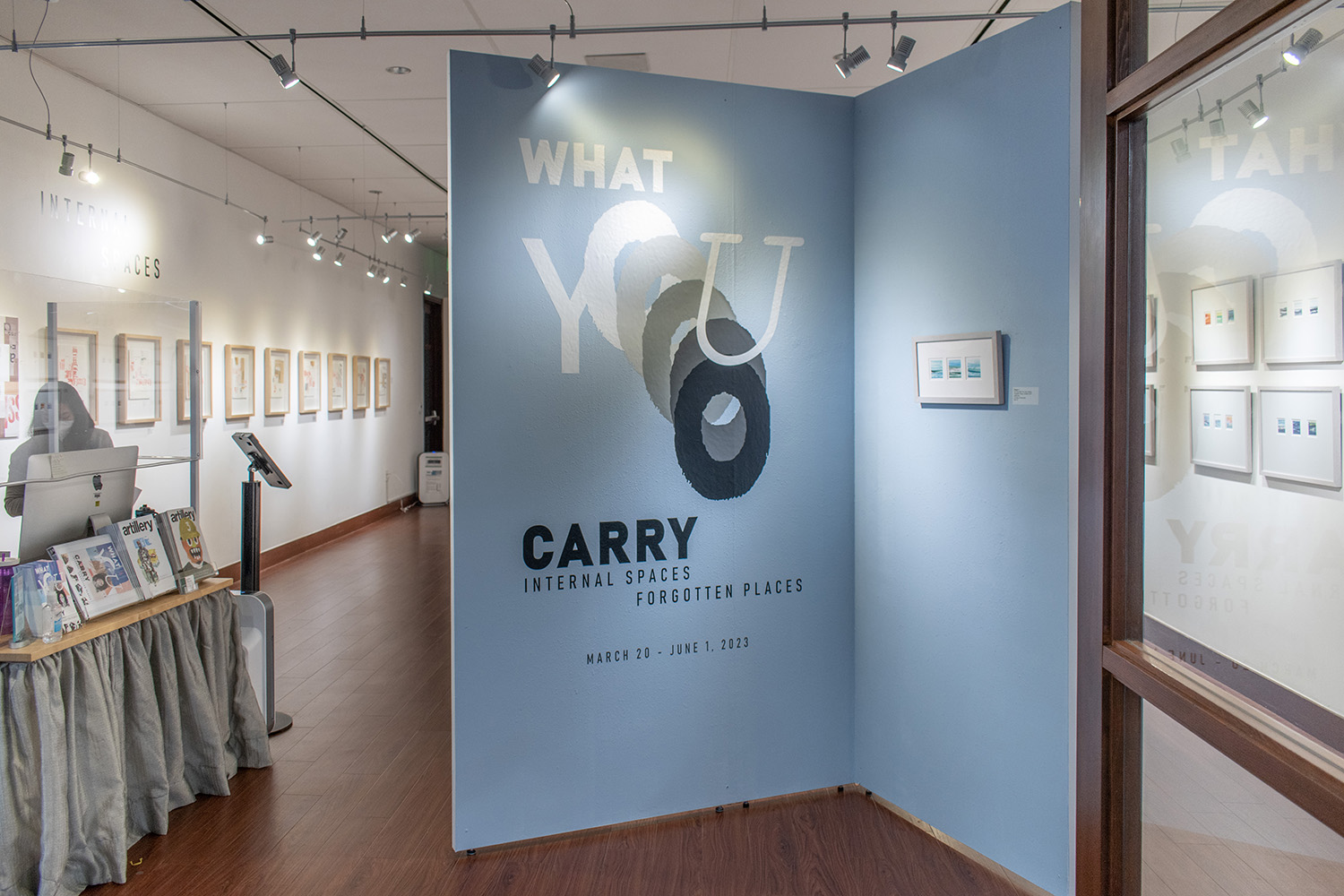 Installation View, Entrance of Gallery,What you Carry: Internal Spaces Forgotten Places, Mar. 20 to Jun. 1, 2023.
Installation View, Entrance of Gallery,What you Carry: Internal Spaces Forgotten Places, Mar. 20 to Jun. 1, 2023.
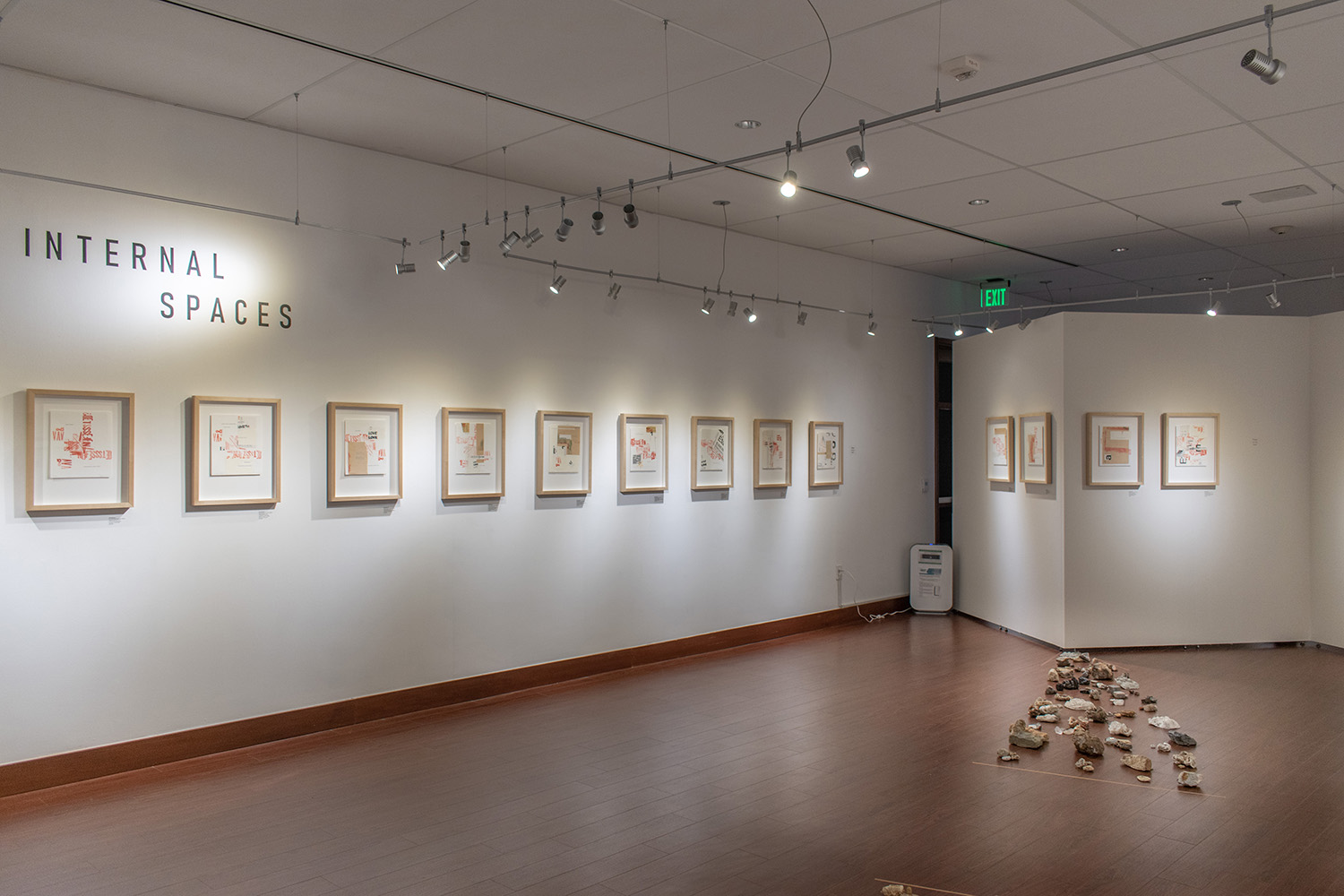 Installation View, Main section of Gallery,What you Carry: Internal Spaces Forgotten Places Exhibition, Mar. 20 to Jun. 1, 2023.
Installation View, Main section of Gallery,What you Carry: Internal Spaces Forgotten Places Exhibition, Mar. 20 to Jun. 1, 2023.
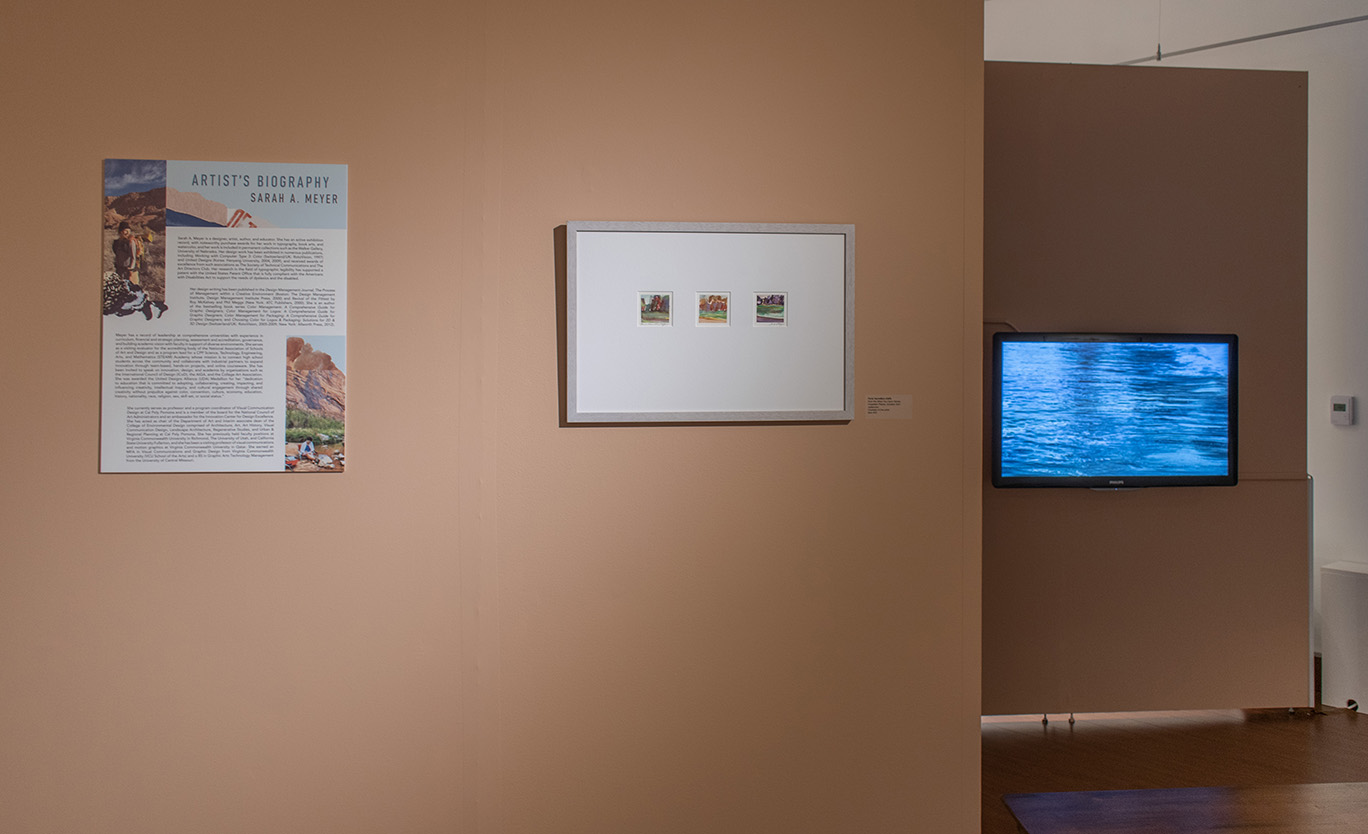 Installation View, Back section of Gallery,What you Carry: Internal Spaces Forgotten Places Exhibition, Mar. 20 to Jun. 1, 2023.
Installation View, Back section of Gallery,What you Carry: Internal Spaces Forgotten Places Exhibition, Mar. 20 to Jun. 1, 2023.

Installation View, Panoramic view of Gallery (front),What you Carry: Internal Spaces Forgotten Places Exhibition, Mar. 20 to Jun. 1, 2023.
 Installation View, Panoramic view of Gallery (side),What you Carry: Internal Spaces Forgotten Places Exhibition, Mar. 20 to Jun. 1, 2023.
Installation View, Panoramic view of Gallery (side),What you Carry: Internal Spaces Forgotten Places Exhibition, Mar. 20 to Jun. 1, 2023.
Reception Photos
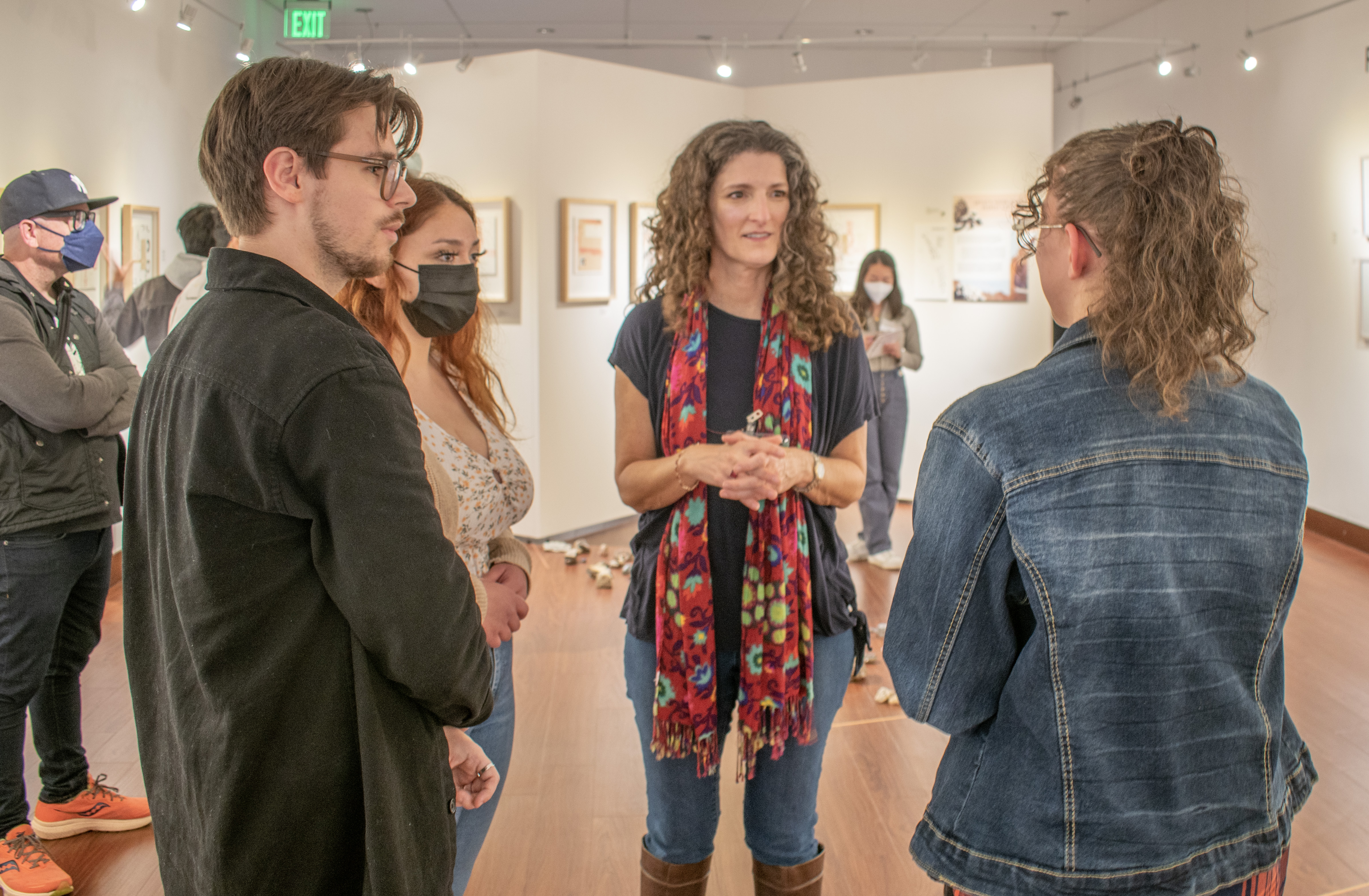 Reception Photos,What you Carry: Internal Spaces Forgotten Places Exhibition, Mar. 21, 2023
Reception Photos,What you Carry: Internal Spaces Forgotten Places Exhibition, Mar. 21, 2023
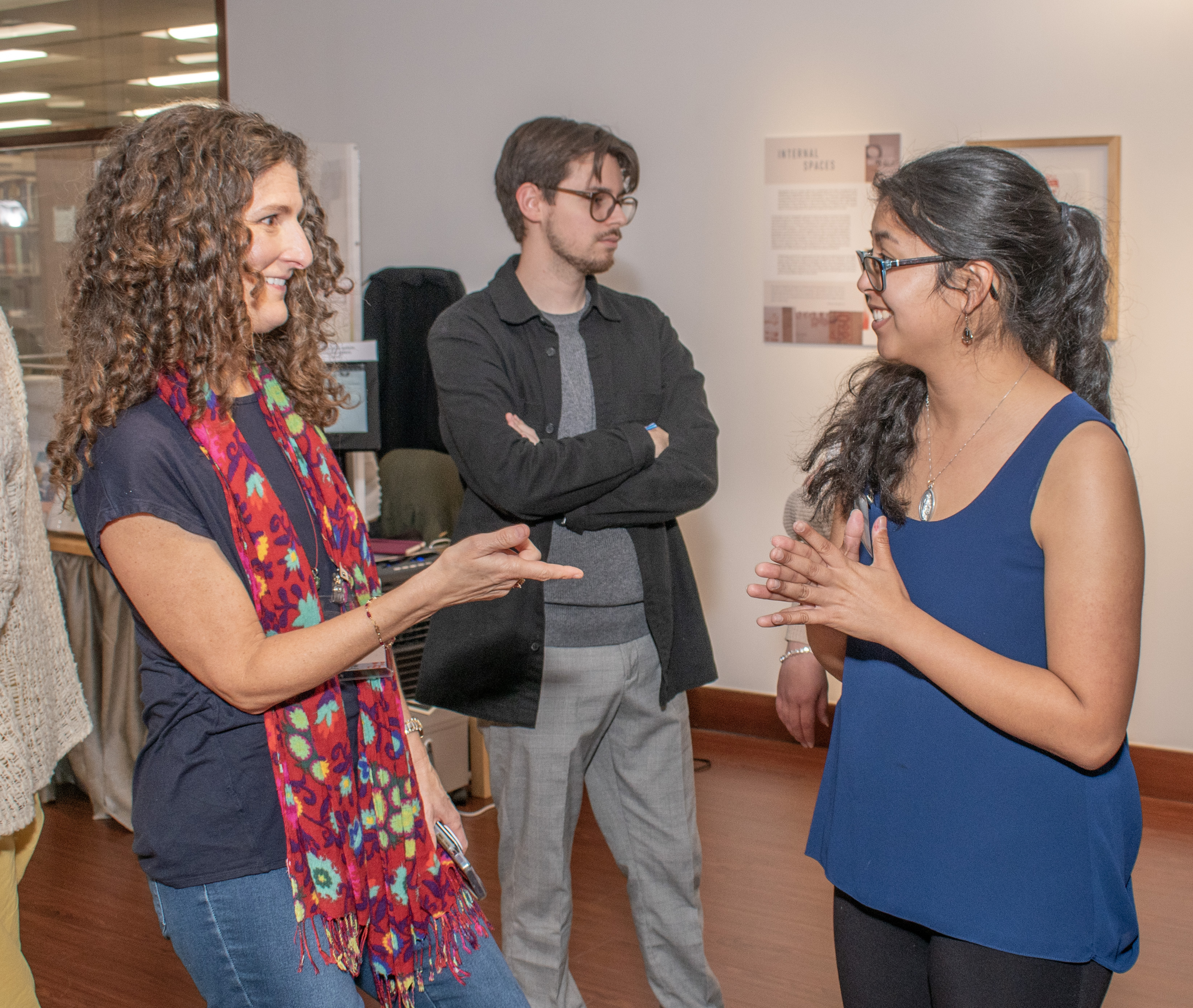 Reception Photos,What you Carry: Internal Spaces Forgotten Places Exhibition, Mar. 21, 2023
Reception Photos,What you Carry: Internal Spaces Forgotten Places Exhibition, Mar. 21, 2023
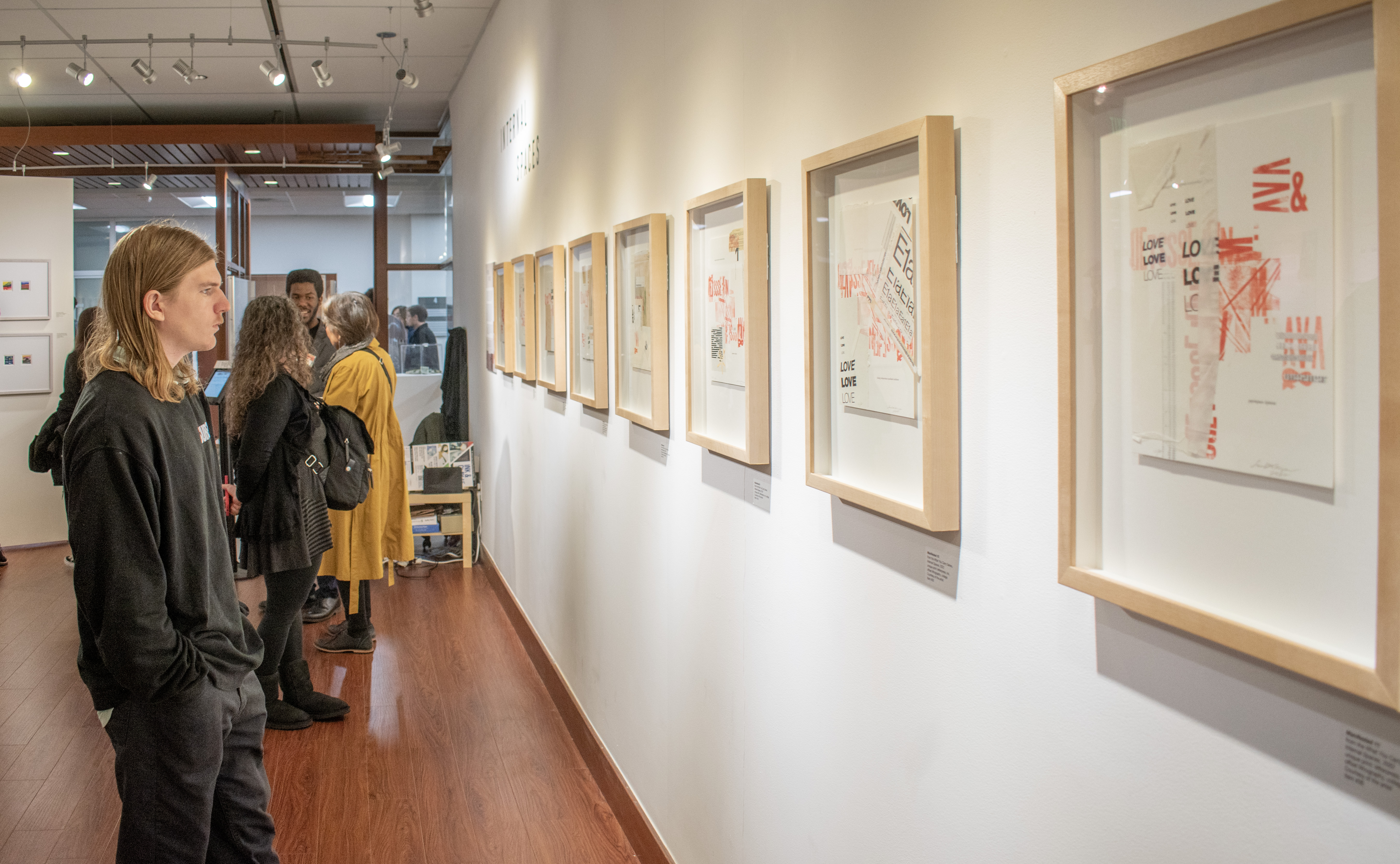 Reception Photos,What you Carry: Internal Spaces Forgotten Places Exhibition, Mar. 21, 2023
Reception Photos,What you Carry: Internal Spaces Forgotten Places Exhibition, Mar. 21, 2023
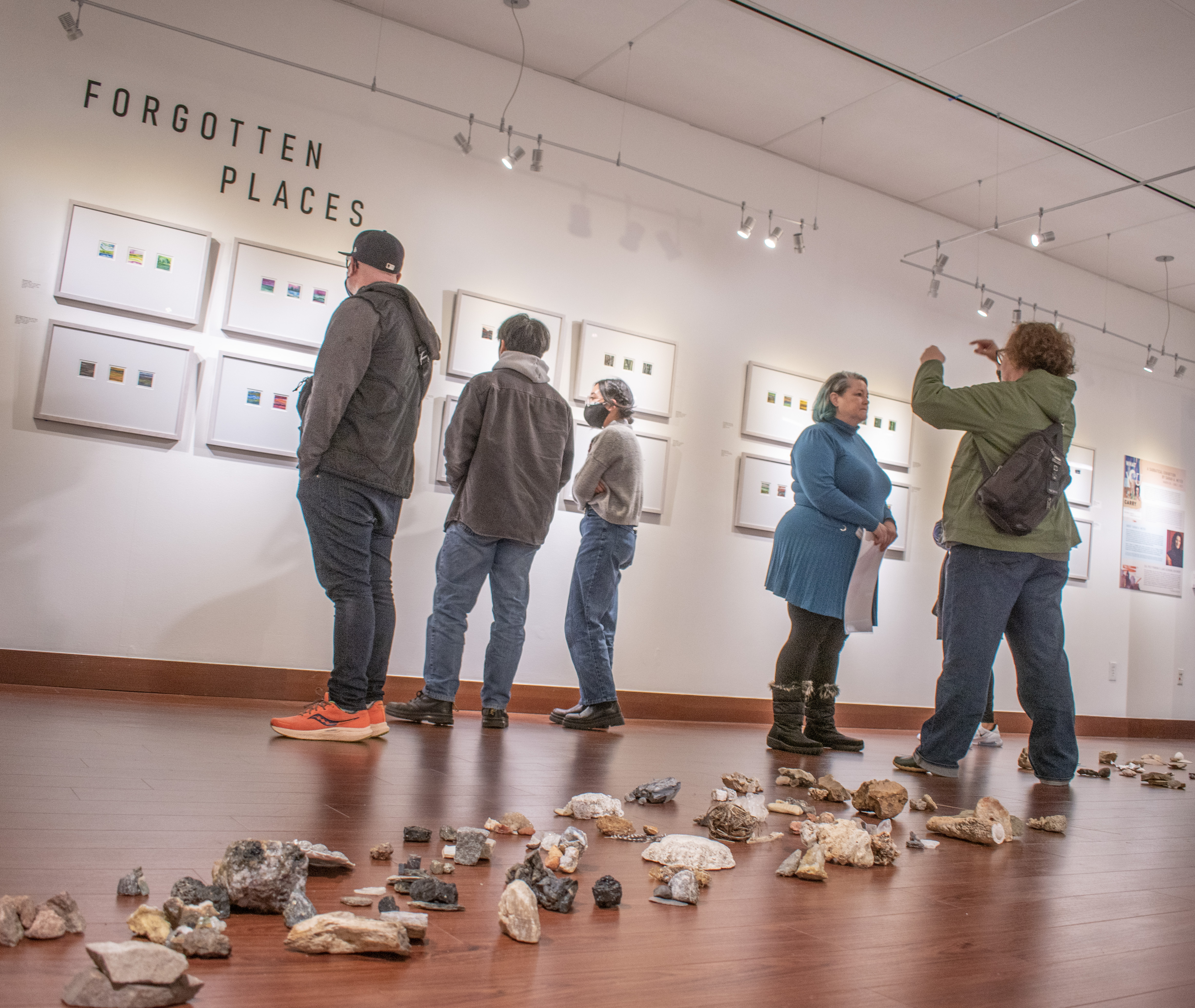 Reception Photos,What you Carry: Internal Spaces Forgotten Places Exhibition, Mar. 21, 2023
Reception Photos,What you Carry: Internal Spaces Forgotten Places Exhibition, Mar. 21, 2023
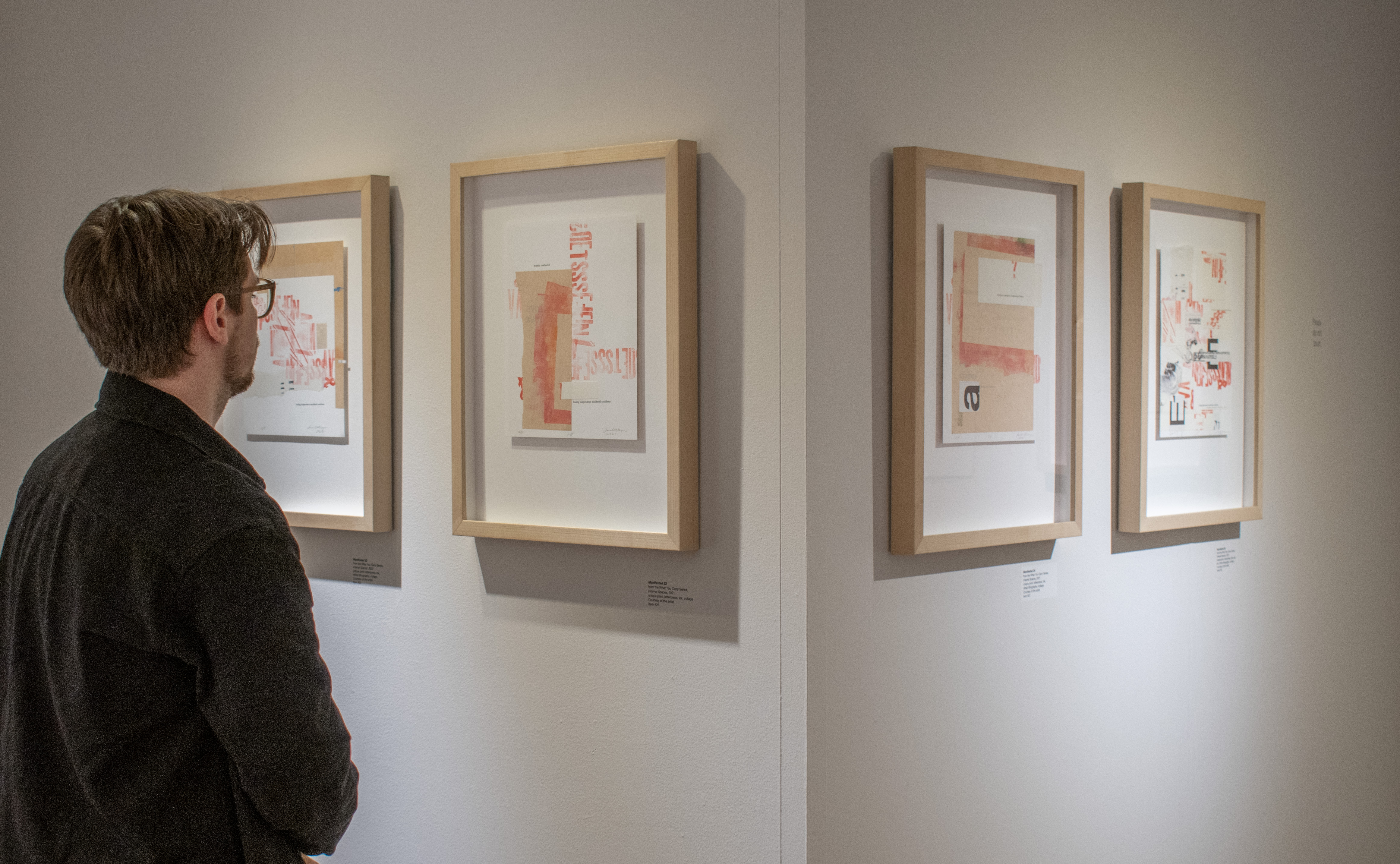 Reception Photos,What you Carry: Internal Spaces Forgotten Places Exhibition, Mar. 21, 2023
Reception Photos,What you Carry: Internal Spaces Forgotten Places Exhibition, Mar. 21, 2023
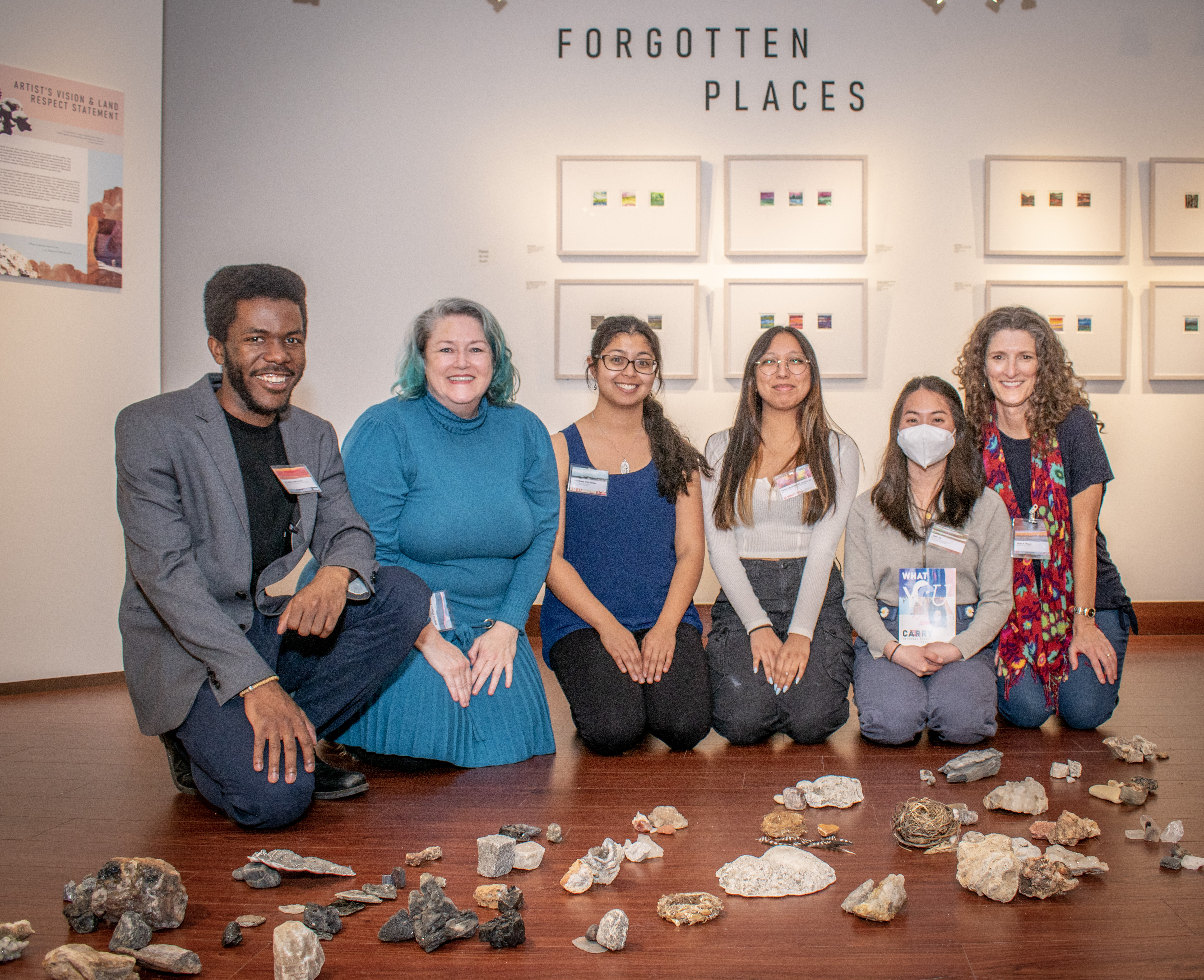 Reception Photos,What you Carry: Internal Spaces Forgotten Places Exhibition, Mar. 21, 2023
Reception Photos,What you Carry: Internal Spaces Forgotten Places Exhibition, Mar. 21, 2023
Artist's Vision & Land Respect Statem
These lands that we travel on are not our own. They are the lands of the wilds, the animals, and the ancient peoples since immemorial and should be respected. In the past, science stated that folks came to this land solely through the Bering Strait during the last ice age. The science did not align with my experience on archaeological dig sites with my mother. In short, the Bering Strait theory seemed rooted in Manifest Destiny, colonialism, and nation-states; thankfully, current science proves this.
We must learn to respect the thoroughfares of our ancestors, the homes of our brothers and sisters, and the rocks, plants and wildlife that support our beautiful biome in its natural rhythms. Therefore, I ask you to look closely. Enjoy the beauty and intricacy. Pay homage to those who have come before us by practicing LNT (leaving no trace) and quietly interacting with nature. But let us be clear: artifacts are not souvenirs, and no artifacts were moved or removed for this exhibit. No relics were disturbed. No ceremonial sites were entered. No people(s) were displaced—at least, not by me. The remnants in this exhibit were respectfully given, or collected, with permission. No objects were stolen or taken from any protected lands.
For more information, please see the following incomplete—and sometimes troubling—list: Society for American Archaeology, Law & Ethics, American Cultural Resources Association, Society for Historical Archaeology, Archaeological Collections Consortium, Native American Graves Protection and Repatriation Act, United States Department of Agriculture Recreational Mineral Collecting Regulations, United States National Park Service, United States Bureau of Land Management, United States National Forest, National Historic Preservation Act & Archaeological Resources Protection Act.

Exhibited Works
Exhibited Works 1

"Manifested 25"

"Manifested 10"

"Manifested 6"

"Rae Lakes Bubbs Creek 1"

"Onancock Outer Banks 3"

"Zoroaster to Monument Creek 3"

"Artifact 1-12"

"Artifact 13-24"

"Artifact 76-88"
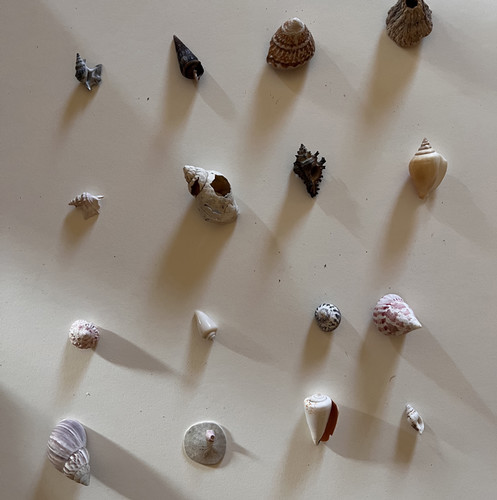
"Artifact 89-101"
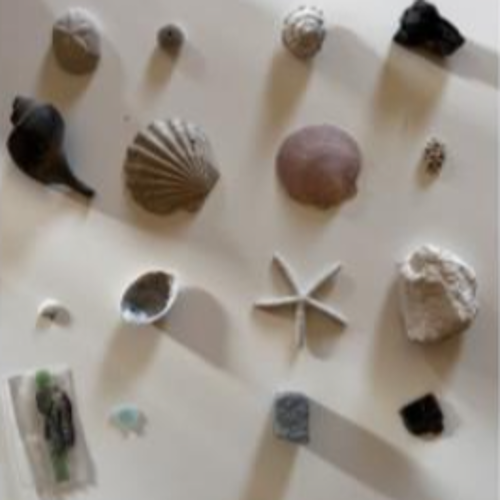
"Artifact 102-114"
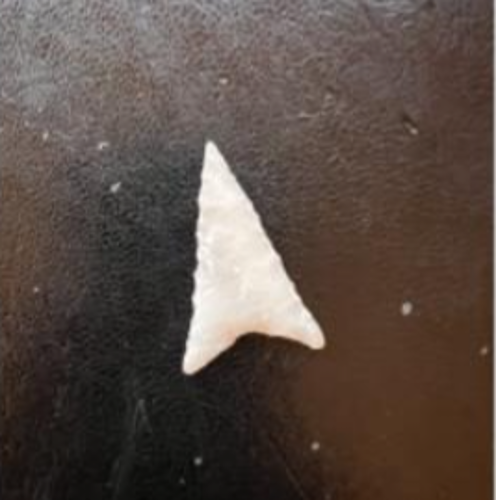
"Artifact 115"
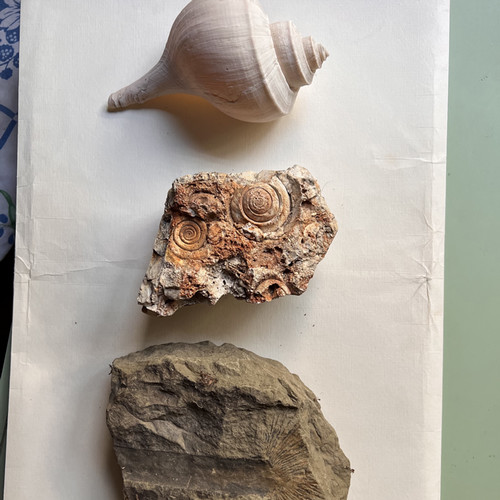
"Artifact 116-118"
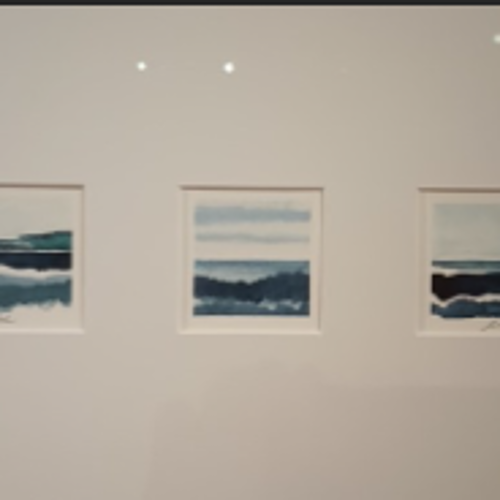
"Rocky Neck "
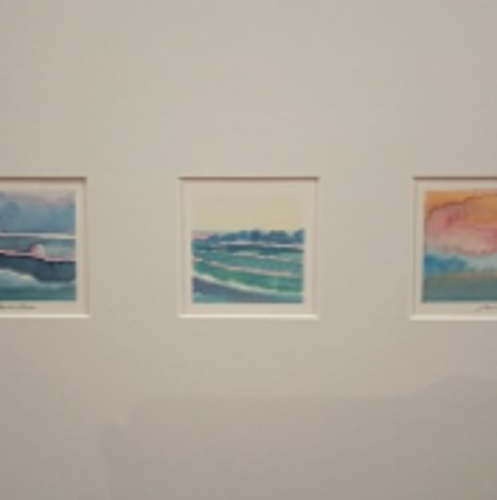
Kure Beach 1
What You Carry: Internal Spaces, Forgotten Places Walkthrough
For several years, Los Angeles-based artist Sarah A. Meyer has been hiking and backpacking to seemingly forgotten places and observing the cultural stewardship of open spaces. During her professional sabbatical leave, she intensified her exploration to include routes traversed by ancient peoples since the Paleolithic period. Using only what she can carry, Meyer provides an intimate window into the wild places that connect people to the natural world. Using diffused colors and the written form, the culmination is an interdisciplinary body of work that chronicles the plein air experience, and poetically maps Meyer’s internal transformation as a designer.
Please click on our YouTube Reception Video for more information about the artist and the exhibition


